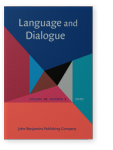Vol. 10:3 (2020) ► pp.389–421
“That’s not my understanding”
Interpretation in the Ghanaian multilingual court
This study investigates the extent to which mostly untrained interpreters render accurately the voices of participants in Ghanaian district courts, and how the participants orient to shortcomings in the interpretations. Based on 7.5 hours of audio-recordings, we found that 91% of interpretations were accurate. The 9% of interpretations that were inaccurate were of five types: non-equivalence in propositional content, omissions, elaborations, incorrect grammatical forms and literal translations. We also found that on some occasions, inaccurate interpretations are corrected by other court participants, making the interpreting activity a collaborative effort. Judges were the most likely to intervene when an interpretation went wrong, perhaps a reflection of the sense of responsibility felt by them for anything that happens in their courtroom.
Article outline
- 1.Introduction
- 2.The status of English in Ghanaian courts
- 3.The role of the interpreter
- 4.The accuracy of the interpretation
- 5.Data
- 5.1Instances of accurate interpretations
- 5.2Instances of inaccurate interpretations
- 5.3Interventions in cases of inaccurate interpretation
- 5.3.1Judge-initiated repair sequences
- 5.3.2Repairs initiated by persons other than the judge
- 5.3.3Unwarranted repairs
- 5.3.4Inaccurate interpretations that were not repaired
- 6.Conclusion
- Acknowledgments
- Notes
-
References
